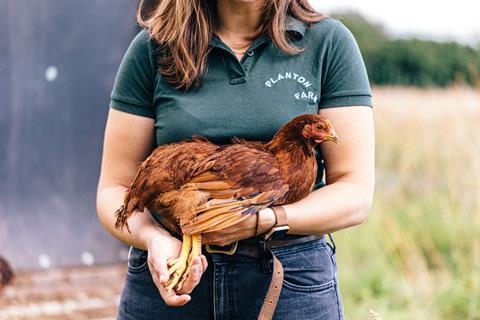
You don’t have to look far to find a news article on the impact of agricultural systems on environmental health. While chicken has previously been the ‘better’ protein when considering carbon footprint, the world is waking up to the complexity of impacts beyond carbon alone. This has been particularly highlighted by recent press coverage of the links between industrial chicken and water quality declines in the River Wye.
Combined, we have spent over 30 years working in the food industry. We have seen first-hand the intricacies of the supply chain beyond farmgate and, as stewards of Planton Farm in Shropshire (and a few farms before), we have first-hand experience growing food within an uncertain environmental, social and economic climate. To face this uncertainty, we must evolve our food system and meet these challenges head on.
Regenerative agriculture offers hope. In its simplest description, it encompasses food systems that mimic nature and ‘give back’ more than they ‘extract’.
Every year in the UK, we produce over one billion chickens for meat and keep around 40 million laying hens for egg production. Chickens are significant for UK diets and UK agriculture. Yet we have removed chickens from the ecosystem – other than feeding people with calories, their role within a wider food and farming system is arguably untapped.
In our careers, we’ve seen ‘tweak’ improvements in industrialised chicken systems, such as reducing stocking density, introducing requirements for natural light, and use of ‘higher welfare’ breeds. While these are significant steps forward, when viewed through the lens of regeneration, these systems still have degenerating elements.
This leads us to an essential question: what does a truly regenerative chicken system look like in the UK?
To answer this, we need to design a system as if nature had designed it, placing the bird at the centre.
We can do this by looking to chickens’ ancestors, junglefowl. Found across a variety of habitats in Asia, junglefowl rear their own young, live in groups of around 30 females watched over by a protective cockerel, and are generalists in what they eat. Junglefowl play a role in the web of interactions that make up a healthy ecosystem: they fertilise and aerate soils, control numbers of insects and plants, and provide nutrition to animals higher up the food chain.
The role of junglefowl in nature is starkly different to today’s industrial chicken production.
Chickens that mimic nature would be much closer to that of the junglefowl. Hens might rear their own young, be kept in smaller groups, be fed diverse feed from circular or food waste, and be kept within environments with abundant foraging opportunities. We should move away from distinct breeds of chickens for producing eggs or meat, and look to dual-purpose, hardier breeds that are more suited to natural living.
Read more on poultry:
-
Boparan feed mill acquisition could hamper competition and drive inflation: CMA
-
Avara Foods reduces carbon emissions ahead of sustainability targets
-
Aldi accused of misleading customers on chicken welfare
-
Soy deforestation in Brazil on rise as Cargill accused of exposing UK poultry to law breaches
While such a system may seem idealistic, our project Impeckable Poultry is doing just this: mimicking the natural system of junglefowl to design a blueprint for truly regenerative poultry production, that could be adopted by any farm, and ultimately be available through grocery outlets supporting regenerative food systems.
Within our redesign, we should all take another step back, examining chicken and eggs at a whole food system and societal level. Regeneration happens across whole ecosystems.
For example, the role of the chicken within the UK farm environment could be questioned. Chickens are not native, so perhaps it would be beneficial to rear geese or ducks that can make better use of the grass that the UK climate is well suited to growing. And then there’s the bigger picture: addressing the UK’s insatiable appetite for this financially ‘cheap’ – yet expensive in terms of ecological and welfare costs – protein, and instead shifting to ‘less and better’ meat.
Whatever way we end up producing poultry, we need to question whether it is actively ‘giving back’ more than it is ‘extracting’. Is it ‘regenerating’? If not, we must refer back to nature’s drawing board to redesign our farming systems.


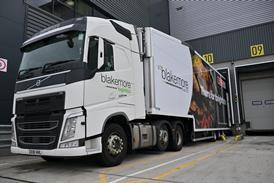

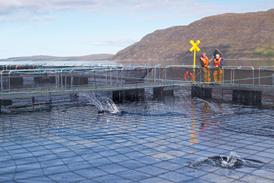





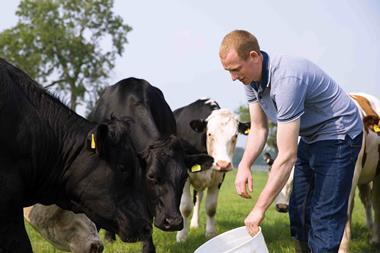
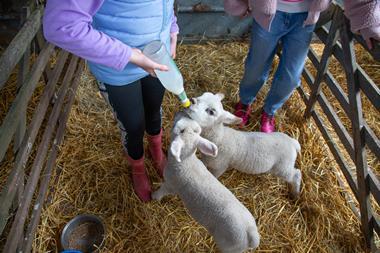
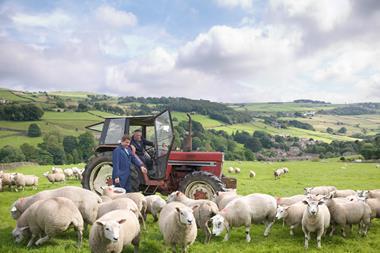






No comments yet